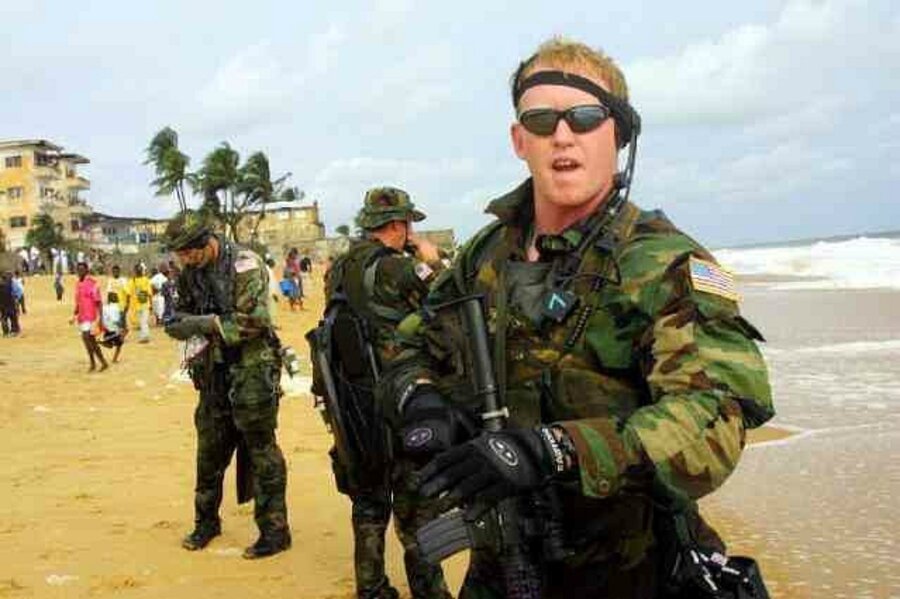Who shot Osama bin Laden? Dueling SEAL Team Six narratives
Loading...
Ever since 911 terrorist mastermind and al Qaeda founder Osama bin Laden was tracked down and killed in Abbottabad, Pakistan, in 2011, the identity of the US Navy SEAL who pulled the trigger has been the subject of much speculation – as much as would have been the case if someone had been able to end the life of Adolf Hitler.
Bin Laden had brought terrorism to the US homeland, killing thousands of Americans, and the man who killed him was an avenging, heroic symbol of retribution.
Now, the identity of the SEAL and stories about him provide shadowy, sometimes conflicting narratives – in the midst of which is the debate over whether members of typically secretive US Special Operations forces should ever go public.
Those narratives are the subject of detailed reporting and broadcast interviews, including a Fox News two-part interview next week with the man Fox calls “The Shooter.”
“Offering never before shared details, the presentation will include ‘The Shooter’s’ experience in confronting Bin Laden, his description of the terrorist leader’s final moments as well as what happened when he took his last breath,” according to Fox. “Additionally, viewers will be offered a behind-the-scenes look at the secret ceremony where he donated the shirt he was wearing during the mission to the National September 11 Memorial Museum in New York City.”
Fox has not yet identified “The Shooter” – the same anonymous identification used in a lengthy, detailed report in Esquire magazine’s March 2013 issue, which includes reference to “his thirty-plus kills of enemy combatants, often eyeball to eyeball.” But other news outlets have said he is Robert O’Neill.
“In total he was deployed on more than a dozen tours of duty in active combat, in four different war zones, including Iraq and Afghanistan. In the course of those tours he undertook more than 400 separate combat missions,” reports the British newspaper Daily Mail, which includes an interview with Mr. O’Neill’s father. “He was decorated 52 times, leaving as senior chief petty officer. His decorations include two Silver Stars, four Bronze Stars with Valor, a Joint Service Commendation Medal with Valor, three Presidential Unit citations, and two Navy/Marine Corps Commendations with Valor.”
O’Neill left the Navy several years short of the 20 years service personnel need in order to receive full retirement benefits – a situation “The Shooter” in Esquire described as the cause of considerable frustration.
“It's a simple truth that those who have been most exposed to harrowing danger for the longest time during our recent unending wars now find themselves adrift in civilian life, trying desperately to adjust, often scrambling just to make ends meet,” Phil Bronstein writes in Esquire.
Since leaving the Navy, O’Neill has been working as a motivational speaker.
The other former SEAL who took part in the raid leading to the death of bin Laden and who has gone public with his account of events is Matt Bissonnette. His book “No Easy Day,” published in 2012 using the pseudonym “Mark Owen,” became a New York Times bestseller.
This week, Mr. Bissonnette sued his former lawyers for malpractice, saying they gave him bad advice that tarnished his reputation, cost him his security clearance, and caused him to surrender much of the book's income to the government.
The lawsuit said Bissonnette has agreed as part of a negotiated settlement to forfeit to the US government the majority of all income he has received from the book, along with future income. It said the payment to the government has already exceeded $4.5 million.
O’Neill no doubt is very familiar with Bissonnette’s troubles.
In a letter last week, the admiral and senior enlisted man who run the United States Naval Special Warfare Command reminded all present and former SEALs that a critical tenet of the organization’s ethos is that “I do not advertise the nature of my work, nor seek recognition for my actions.”
“Violators of our Ethos are neither teammates in good standing, nor Teammates who represent Naval Special Warfare,” Rear Adm. Brian Losey and Force Master Chief Michael Magaraci wrote. “We do not abide willful or selfish disregard for our core values in return for public notoriety and financial gain, which only diminishes otherwise honorable service, courage and sacrifice.”
Rear Admiral Losey and Force Master Chief Magaraci promised to “actively seek judicial consequence” for any SEAL who discloses classified information, putting families or future operations at risk.








